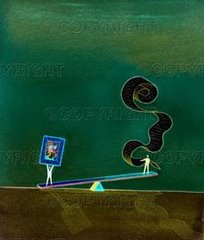The 100 takes place 97 years after an apocalyptic war on Earth, the known survivors of which were members of several space stations that banded together to form "The Ark." The Ark is a complex network of systems and can only hold a limited population. Most crimes aboard The Ark are punishable via expulsion through an airlock. However there are 100 children/adolescents who were deemed too young for the death penalty and whom live in solitary confinement.
The Ark itself is dying, though that is a secret confined to the ruling council. As an experiment, way to avoid resource depletion, and reprieve from punishment, the 100 children are sent back to Earth to determine whether humans can survive and repopulate the Earth. They make it to the surface with 97 survivors - a poetic number given the number of years for which humanity has been banished off-world. The first few episodes reveal a Lord of the Flies-type civilization that emerges among the children.
What makes The 100 interesting is that it doesn't take on a post-apocalyptic setting immediately or close in time to the apocalypse. Instead it takes places almost 100 years later. And it actually deals with multiple apocalypses - the initial one which made the ground uninhabitable, the diminishing supplies of oxygen and everything else on The Ark, and what has happened to those humans left to create their own post-apocalyptic societies. Some of these humans are "grounders" with whom The Ark survivors must contend, others are the supposed remnants of one of the powers who participated in the War that ended civilization, however we're not yet sure they exist. The plot of the first season seems to revolve around how these groups of humans interact.
Hopefully, this will be successful enough to merit a second season to help us resolve some of these issues.
Wednesday, May 07, 2014
The 100: A New Take on Post-Apocalyptic TV
Labels:
Grounders,
Lord of the Flies,
post-apocalypse,
post-apocalyptic,
The 100
Subscribe to:
Post Comments (Atom)


No comments:
Post a Comment